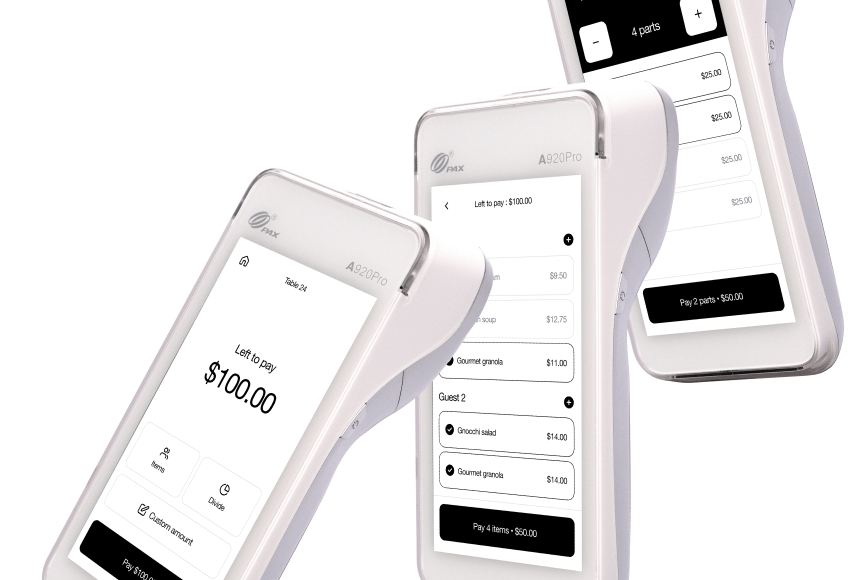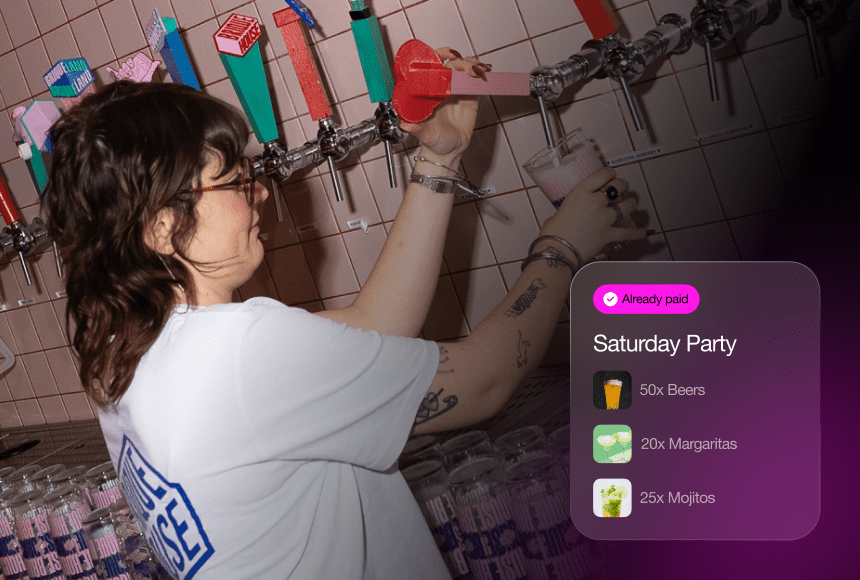
QR Code Payments: The Key to Smoother Dining Experiences
The Growing Popularity of QR Code Payments in Restaurants
Picture a bustling dining room on a busy Saturday night. Servers navigate between tables carrying trays, jotting down orders, and refilling drinks—every moment counts. Meanwhile, guests often wait, waving for attention just to settle their bill. This scenario is so common that many restaurant owners have come to accept it as part of the job.
But in recent years, an alternative has stepped into the spotlight: QR code payments. Instead of waiting for a server to bring the bill and the card reader or fetch change, guests can instantly scan a code at the table using their smartphone. This method has soared in popularity in the United States, and it’s quickly becoming a standard in restaurants of various sizes, from casual eateries to fine-dining establishments.
Why are guests embracing this approach? And why should restaurant owners—like you—consider adding it to your list of priorities? Let’s dive into the significant reasons behind the rising demand, backed by industry insights and real-world examples.
Speed and Convenience: The Ultimate Guest Priorities
When the final course is over, the guest experience often hinges on the billing process. Nobody wants to strain their neck trying to spot a busy server or wait around for the check. That’s where QR code payments come in.
In a 2021 report by Statista, nearly half of surveyed customers in the US reported using some form of contactless payment at least once a month. This number has been on a steady upward curve, showing an appetite for anything that saves time and friction.
Here’s how speed plays out step by step:
- Immediate transaction: No more signaling for the server or waiting for the check to arrive. Scanner apps or smartphone cameras read the code and direct the guest to a secure payment page right away.
- Automatic calculation: Relevant taxes, fees, and tip suggestions can be pre-calculated. Guests can complete payment within seconds.
- Instant confirmation: A quick digital receipt confirms the payment, providing peace of mind for both guest and owner.
Whether someone’s in a rush to catch a show or simply wanting to avoid unnecessary downtime, a QR code payment system facilitates a swift departure. This emphasis on speed resonates strongly with younger diners, but it also appeals to anyone who values an efficient dining routine.
A Closer Look at the Guest Experience
Let’s explore a hypothetical scenario. Imagine Lucy’s Diner, a mid-sized restaurant in Chicago. Lucy, the owner, sensed that her patrons were growing frustrated with delayed check drop-offs. She tested QR code payments on half of her tables for one week.
The results were immediate:
- The average time from “ready to pay” to “payment complete” dropped by 40%.
- Customer satisfaction scores—tracked via a simple post-payment survey—rose by about 10% among those using the QR method.
- Her servers, freed from constant runs with the payment terminal, could engage more with guests, suggest desserts, and handle last-minute requests promptly.
This scenario shows one big factor in QR code adoption: it actively enhances the overall dining experience. Instead of dampening that final interaction between guest and server, it keeps everything cohesive, quick, and positive.
That’s especially meaningful in a culture where online reviews and word-of-mouth can make or break a restaurant’s reputation. Speeding up checkout often translates to happier customers—and a readiness to share those positive experiences online.
The Operational Advantage for Restaurant Owners
Of course, any change in how guests pay also affects the organization of your restaurant. A smooth transition isn’t just about scanning codes; it’s about improving the entire workflow. Here’s why operators typically find QR payment systems beneficial:
- Better table turnover: In fast-paced environments, every minute counts. By removing the billing bottleneck, tables open up faster, letting you seat more guests during peak hours.
- Reduced staff workload: Servers spend less time running credit cards or making change, freeing them to focus on service, upselling, or simply ensuring a pleasant dining room atmosphere.
- Lower risk of errors: Manual calculations can sometimes lead to mistakes. With digital confirmations, you can reduce the possibility of missed items or misapplied discounts.
- Potential for more sales: Many QR code systems offer add-ons such as “Would you like to order dessert?” prompts or special promotional messages. This can naturally boost check sizes.
In a competitive industry, these operational improvements mean more than just convenience. They can substantially elevate the bottom line, improving revenue per table while maintaining or reducing labor expenses.
And because guests increasingly expect a tech-forward experience, offering QR code payments signals that your restaurant is keeping up with modern standards—another factor that can help differentiate you.
Why Tipping Tends to Improve
Restaurant owners know how crucial tipping is to employees. Tips not only reward good service but also help attract and retain talented staff. It’s an essential part of the US service industry’s economic structure. Interestingly, QR code payments often lead to higher tips, and here’s why:
- Easy prompts: Many systems gently prompt guests with tipping options (e.g., 18%, 20%, 25%), and this visual nudge can encourage more generous tipping than a line on a physical receipt.
- Emotional timing: While some might think removing face-to-face interaction lowers tips, the moment of payment is still fresh with the guest’s dining satisfaction. Seamless digital checkouts frequently preserve that goodwill.
- No awkward calculations: Having a suggested tip total spelled out eliminates the guesswork, reducing the chance a diner might round down or forget the tip altogether.
Consider Lucy’s Diner again. After rolling out QR payments, Lucy noticed a 15% boost in average gratuities for those customers. Her servers were thrilled. When staff members see the potential for higher tips, they often become more enthusiastic about adopting new technology and positively reinforcing it to guests.
Making Google Reviews More Accessible, Instantly
Positive online reviews can catapult an establishment’s reputation, especially on Google, one of the most visited sites in the world. Guests who pay via QR often encounter a prompt encouraging them to leave a quick note about their dining experience—and this is a direct path to boosting your online visibility.
Imagine the same diner leaving a glowing review about Lucy’s “fast, friendly service and easy payment method.” Potential patrons reading that might decide on the spot to book a table. And because the step is so seamless—guests can do it before they even stand up from the table—there’s a higher chance they’ll follow through.
Additionally, online visibility isn’t just about racking up five-star feedback. Detailed, honest reviews add legitimacy to your business. You’re able to see real-time feedback, and prospective customers can see an authentic pattern of quality.
Addressing Security Concerns in the Digital Age
Whenever technology meets financial transactions, there’s one question that immediately arises: “Is it safe?” As a restaurant owner, you care about both your guests’ security and your own liability.
Modern QR-based payment solutions typically rely on data encryption, secure payment gateways, and compliance with strict industry standards such as the Payment Card Industry Data Security Standard (PCI DSS). If your POS system integrates well with these solutions, you’re offering as robust a security layer as traditional card swipes—some argue it’s even more secure, as it reduces the handling of credit cards by multiple staff members or payment terminals.
Of course, not all solutions are created equal. Pay attention to the security measures in place:
- Encrypted connections: Ensures data is protected from interception.
- Secure hosting: Relies on reputable companies and recognized hosting providers.
- Tokenization: Often used so actual card details aren’t even stored on your server, minimizing risk.
Guests, once they see evidence of strong security measures, are more likely to dust off any apprehension they may have. Educating your waitstaff to reassure diners about the safety of QR transactions can give them peace of mind.
Enhancing Staff Satisfaction through Tech
Happy staff make for a better restaurant experience all around. When servers aren’t rushed to accept payments or handle complicated transactions, they can focus on what they do best: connecting with guests, guiding them through the menu, and making sure each individual feels well taken care of.
This improvement in staff satisfaction can have a ripple effect:
- Lower turnover: Reducing repetitive tasks and providing a smoother workflow can motivate your team to stick around longer.
- Upselling opportunities: Freed from spending extra time juggling the card reader, servers have more bandwidth to suggest specials or recommend add-ons.
- Better training experiences: When you integrate a new payment solution, you can combine that process with fresh training opportunities. New staff will appreciate clear guidelines and best practices from day one.
In many ways, the integration of QR payments is a team effort, from onboarding your back-of-house staff to training your shift managers. But the payoff is worth it. When staff efficiency and staff morale are high, that positivity radiates into every corner of your restaurant.
Overcoming Common Reservations About QR Code Payments
Despite the benefits, some restaurant owners remain hesitant. Maybe they worry about older clientele feeling confused by this new technology, or they fear implementation costs.
Below are a few common concerns and how to address them:
- “Our guests are not tech-savvy.” You might be pleasantly surprised. Smartphones are now mainstream among most age groups, and scanning a QR code is often more intuitive than you’d expect. Offering a short how-to on the menu or coaching servers on easing guests into it can go a long way.
- “It will cost too much.” The cost of QR solutions varies, but many providers—such as sunday—design their pricing to be accessible for small to large operations. The potential gains in table turnover, tips, and efficiency frequently offset initial expenses.
- “We want to keep it personal.” Digital payments don’t have to be impersonal. Quite the opposite: By streamlining the grunt work of payment, your team has more time to connect with guests socially and ensure a friendly atmosphere.
- “What if it doesn’t work with my existing POS?” Reputable QR code payment systems usually integrate seamlessly or have easy onboarding processes to synchronize with varied restaurant POS systems. A quick setup can often be done in a matter of days.
Overcoming these reservations starts with honest communication. Clearly promoting the benefits to staff, highlighting the convenience to guests, and ensuring stable technical implementation sets the stage for long-term success.
A Possible Implementation Roadmap
If you’re considering adding QR payments to your restaurant, a structured approach helps ensure minimal hiccups. Here’s a simple sample roadmap:
- Research and Selection: Identify a trustworthy QR payment provider. Explore features related to reporting, tipping, security, and user-friendliness.
- Staff Training: Walk your servers, hosts, and managers through the new system. Provide a cheat sheet highlighting common questions guests might have.
- Pilot Program: Test the QR solution with a segment of tables or specific time slots. Gather feedback from both staff and guests.
- Full Rollout: Expand the program when you’re confident in its functionality and have ironed out any glitches.
- Promotion and Feedback: Use table tents, signage, or even a quick mention from the server to encourage guests to pay by QR. After some weeks, gather feedback and measure outcomes, such as speed of payment and average tip size.
By treating this as a well-thought-out process, you can anticipate challenges and steadily build confidence among your team.
What the Future Holds for the Dining Industry
QR code payments are only part of a broader shift in how people dine and pay. According to the National Restaurant Association, digital ordering, contactless experiences, and seamless checkouts will likely keep expanding in the coming years.
Technology is quickly becoming a driver of loyalty. Diners are comfortable using their phones for everything—reading menus, customizing orders, splitting checks, and leaving reviews. Restaurants that want to stay competitive in the US market need to embrace these shifts and adapt.
Payments are a small yet influential piece of a vast puzzle that includes social media presence, online reservations, loyalty programs, and more. By pivoting early, owners can differentiate themselves in an environment where consumers are hungry for convenience and care.
FAQ: Addressing Restaurant Owners’ Top Questions
1) How do I encourage hesitant guests to try QR payments?
A simple explanation from your staff can make a difference. Show them a brief demonstration: open your camera, hover it over the code, tap the link, and you’re good to go. Additionally, place subtle instructions on the menu or a small table card so they feel guided and confident.
2) Will my servers lose the personal touch with guests?
Not at all. If anything, eliminating repetitive tasks gives them precious time to check in on guest needs or share specials. Personal touch doesn’t have to hinge on payment mechanics; it’s about friendly, genuine engagement.
3) Does switching to QR code payments impact my existing POS system?
Most modern QR solutions integrate with popular restaurant POS systems. You’ll want to ensure compatibility from the beginning. Guidelines and tutorials are usually available, and many providers have support teams to assist with setup.
4) Are tips automatically split among my staff, or can I control how they’re distributed?
This depends on the specific QR provider and your POS integration. Many solutions allow for flexible tip distribution—pooling or individual. Speak with your provider to configure a tip policy that aligns with your current practices.
5) What if internet connectivity fails or the code can’t be scanned?
Always keep a backup method available—like a physical card reader. Thankfully, smartphone cameras and standard data connections are quite reliable in most urban and suburban areas. For remote locales or events, you might want a strong Wi-Fi or cell data plan as a contingency.
Onward: Empowering Diners and Elevating Service
In a world that never stops moving, guests crave faster, more flexible dining experiences. QR code payments represent a direct path to giving them what they want—while simultaneously reducing strain on your staff and boosting your revenue potential.
Think of it like a perfectly executed dish: one that balances flavor, presentation, and efficiency. By integrating QR payments, you serve your customers’ appetite for convenience without sacrificing the warm, human elements that keep them coming back. Restaurant ownership is no small task, but adding a little tech-savvy flair can amplify the sense of care and hospitality you already provide.
Ultimately, if your restaurant can integrate innovative solutions like QR payments while staying true to its core values and personal touch, you’ll have found that sweet spot where guest satisfaction, operational efficiency, and staff happiness converge—setting the table for a truly thriving business.
Find out more today
Drop us your details below and we’ll reach out within the next 24h
“Check please” is a thing of the past.
With our integrated QR codes your customers pay in seconds, straight from their table.



